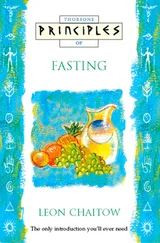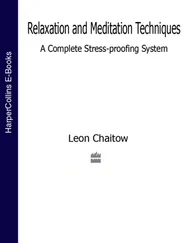Dr Nixon states that drugs are unsatisfactory in the treatment of hypertension, since the underlying causes are not dealt with.
Neurological Disease
Among other stress-induced conditions are those that mimic more serious conditions. ‘Symptoms suggesting serious neurological disease are common in patients suffering from anxiety states, or depressive illness, partly, or wholly, attributable to the effects of stress’, states Dr Richard Godwin Austin, consultant neurologist of Nottingham General Hospital. ‘The most common example seen in the neurological out-patient clinic is the patient suffering from recent onset headaches … Patients under physical or psychological stress, frequently develop tension headaches. These may occur in the setting of a depressive reaction, with symptoms of agitation or phobia. The headache often fails to respond to any form of simple analgesic.’
Cancer
There has also been a good deal of research into stress and its relationship to the onset of cancer. The German researcher Dr W. Herberger has noted that chronic anger, disappointment, fear and inability to cope with misfortune often play a role in its development. It has been found that the majority of cancer sufferers have a tendency to dwell on past misfortunes, real or imagined, and they have little sense of the future. Dr Hans Moolenburg, a noted Dutch physician, has described cancer patients as people who have been ‘battered by fate’. It has also been noted that in the U.K., where six out of ten members of the general public acknowledge some belief in God or some spiritual agency, that nine out of ten cancer patients had no such belief. Cancer might therefore be described as, in part, a disease of ‘spiritual deficiency’.
Load, Strain and Stress – Harmful and Helpful Factors
Before looking at some of the conclusions that have been come to concerning the relationship between personality traits and disease states, I want to touch on the possibly surprising healing potentials of some aspects of controlled stress. First, I want to be sure that you truly understand what is, and what is not stress.
Any reaction of your body or mind in response to an environmental or psychological demand is commonly termed a stress reaction. However, the total process of adaptation can be divided into three major phases, termed load, strain and stress .
Load is that part of the process in which an interaction takes place between you and any factor (physical, chemical or psychological) which is capable of disturbing you, or which demands a response from you. Strain is the term applied to the change(s) which result in your body/mind after the application of that load. It is the defensive (healing or normalizing) phase which follows on from the strain, in which an attempt is made to restore the situation to balance, which, strictly speaking, should be termed stress .
Stress can therefore often be seen to represent a positive, normalizing effort, something which can only be considered good, helpful and desirable. It is this self-healing process upon which we rely for survival, and in fact upon which all healing methods depend. For example, cut yourself (load and strain) and stress follows as the wound heals. This is homoeostasis in action.
Many other symptoms which we commonly try to ‘cure’ are, in fact, nothing more than evidence of the body putting things right. One good example of this is that of the fever which occurs during an infection. The infecting agent (load) has led to local or general problems, leading in turn to a ‘stress’ reaction (adaptive response) on the part of the immune system, which involves elevation of the body’s temperature (the fever). Under normal conditions this is a self-limiting process which causes no harm (except to the invading virus or bacteria) and which effectively gets rid of the infecting agent.
Such a stress reaction can actually be said to be life-saving, and yet – in many instances – the first objective of most people seems to be to try to over-ride this self-healing process and to take or do something to bring down the temperature! Such an action is clearly counterproductive, and not in the best interests of the body as a whole, unless the fever is of life-threatening proportions.
Stress as a Healing Factor?
There is yet another side to the concept of stress, and that is the therapeutic use of it (especially in alternative or complementary therapy) using the triple features of load, strain and response (stress). For example, manipulative methods such as chiropractic and osteopathy have historically seen as one of their primary roles the removal of obstructions to normal function as they normalize mechanical restrictions. They also understand that under ideal conditions self-normalizing responses take care of the processes of restoration of functional and structural integrity following appropriate manipulative care. What research has shown is that it is the degree of ‘load’ which the therapist applies which decides whether or not a good end-result is achieved by the treatment.
Selye’s Evidence
In some of his early research, conducted in the 1930s, Hans Selye MD, demonstrated the homoeostatic process in action, with spectacular clarity. He observed, in experimental animals, a specific pattern of response to a variety of what he termed ‘noxious stimuli’. Whether he used poisons of one sort or another, intense heat or cold, radiation or mechanical trauma (i.e. ‘load’), he noted what he called a ‘stress-syndrome’ which involved, among other changes in adrenal and thymic activity and size, loss of weight, haemoconcentration, and sometimes intestinal ulceration. These changes are evidence of ‘strain’ and an inadequate ‘stress’ (self-healing) response, since where such problems had occurred, the homoeostatic mechanisms had clearly been overwhelmed and had failed to restore equilibrium – or health.
Selye made an important subsequent discovery following experiments in which the load factor involved the injection of noxious (poisonous) chemicals under the animal’s skin. Selye, not surprisingly, observed a degree of response which was directly related to the concentration of the poison. He also noted that if a second stress factor (additional load) was then introduced (brief exposure to intense cold, heat, immobilization etc.) to animals previously exposed to mild degrees of toxicity there was an improvement of the initial response with, for example, reduction of tissue damage and speedy healing.
If, however, the initial toxic load had been heavily concentrated with very marked lesions, the secondary stressor (load) caused a rapid increase and spread of tissue damage, frequently leading to necrosis and death. This time the ‘load’ and ‘strain’ had overwhelmed the potential for healing.
These observations led Selye to state the truth which had been revealed. This was the crucial experiment showing that stress can either cure or aggravate a disease depending upon whether the inflammatory responses to a local irritant are necessary or superfluous.’
Selye attempted to make clear that a stress response involved many variable factors based on the unique and idiosyncratic ability of the organism (person or animal) to respond to load and strain. The variable nature of the response is based on genetic and acquired characteristics and energy reserves.
Whether treatment involves having something done to you (manipulation, insertion of an acupuncture needle, a change in diet, psychotherapy, taking a substance (whether a herb, a drug, a supplement or even a homoeopathic dilution of a substance) the same rules apply. It is always the body which is being ‘asked’ to respond, and this makes the potential healing response, by definition, a stress reaction.
Читать дальше












